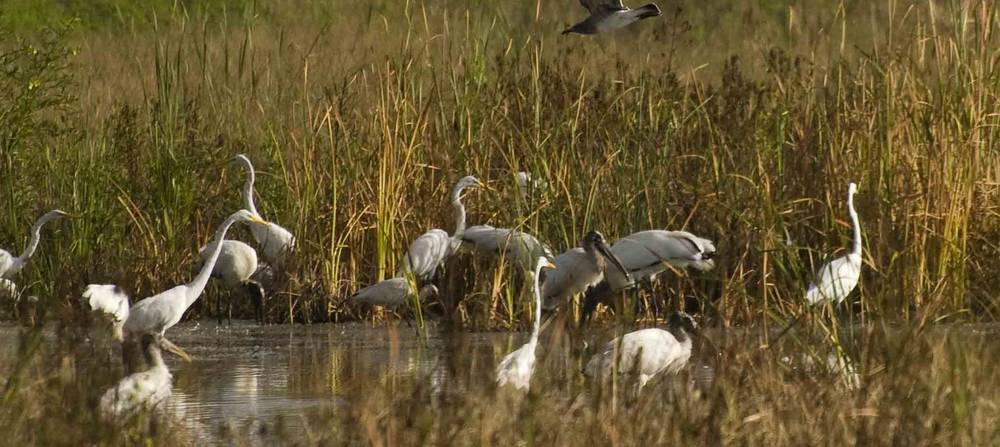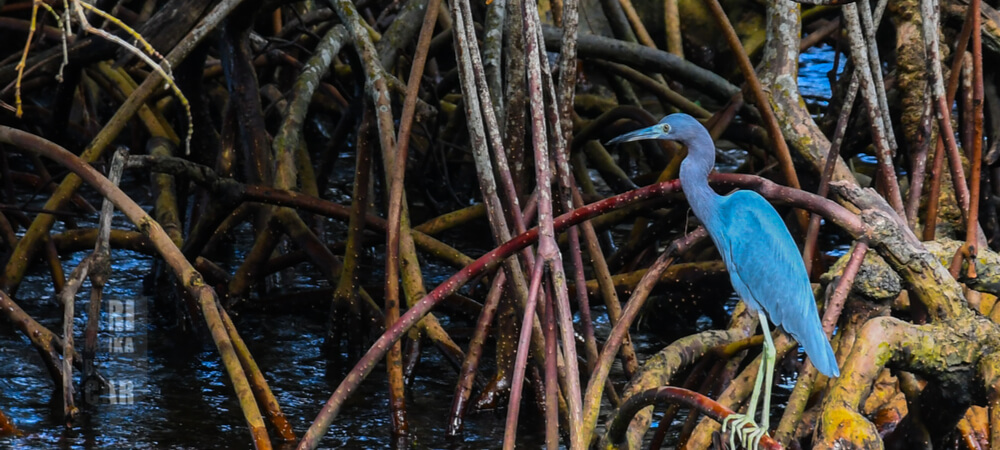Muthurajawela marsh, situated along the captivating western coast of Sri Lanka, stands as an extraordinary and immensely diverse ecosystem. This exceptional region not only serves as a sanctuary for the abundant wildlife but also acts as a nature reserve that carefully preserves and protects its countless species of plants and animals. With its incredible array of flora and fauna, this unique and mesmerizing marshland truly captures the essence of Sri Lanka’s astonishing natural heritage. In the following paragraphs, we shall delve into the enthralling facts surrounding Muthurajawela marsh, shedding light on its unparalleled significance within Sri Lanka’s vast biodiversity.

What is Muthurajawela Marsh?
Muthurajawela marsh is a wetland ecosystem that covers an area of approximately 6,000 hectares. It is situated in the Negombo lagoon, which is the largest lagoon in Sri Lanka. The marsh is made up of a complex network of waterways, canals, and lagoons, and is home to a diverse range of plant and animal species.
A Haven for Wildlife
Muthurajawela marsh is a haven for wildlife, with over 190 species of birds, 40 species of fish, and 40 species of butterflies recorded in the area. It is also home to several species of mammals, including the fishing cat, otter, and mongoose. The marsh is also an important breeding ground for many species of birds, making it a popular spot for birdwatchers. According to the Department of Wildlife Conservation of Sri Lanka, Muthurajawela marsh is recognized as a Ramsar site, which is a wetland of international importance under the Ramsar Convention.
A Vital Ecosystem
The marsh plays a vital role in maintaining the ecological balance of the surrounding areas. It acts as a natural filter, purifying the water that flows into the Negombo lagoon. It also serves as a buffer against coastal erosion and helps to prevent flooding during heavy rains.
History of Muthurajawela Marsh
The history of Muthurajawela marsh can be traced back over an astonishing span of 7,000 years, serving as a testament to its remarkable longevity. Over time, this marshland has undergone a series of transformative processes, ultimately leading to its formation as we know it today. It is widely believed that the marsh owes its existence to the combined effects of rising sea levels and the gradual deposition of sediment originating from the surrounding rivers. Such geological phenomena have sculpted this mesmerizing landscape, culminating in the creation of Muthurajawela marsh, a natural wonder that embodies the delicate interplay between land and water.
Throughout the course of its extensive history, Muthurajawela marsh has evolved alongside its human inhabitants and has played a multifaceted role in their lives. In a bygone era, this lush expanse of land was harnessed for agricultural purposes, providing sustenance and livelihood to local communities. However, the marsh underwent a dramatic transformation during the 19th century, when the discerning gaze of the British colonial government recognized its immense ecological value. It was this very recognition that prompted the government to bestow upon Muthurajawela marsh the esteemed status of a nature reserve, safeguarding its inherent beauty and ecological significance for generations to come.
A Protected Area
In 1996, Muthurajawela marsh was declared a wildlife sanctuary, providing legal protection to the diverse flora and fauna found in the area. The marsh is also recognized as a Ramsar site, which is a wetland of international importance under the Ramsar Convention.
Flora and Fauna of Muthurajawela Marsh
Muthurajawela marsh is home to a wide variety of plant and animal species, making it a paradise for nature lovers. Here are some of the fascinating flora and fauna found in the marsh.

Flora
The marsh is home to over 200 species of plants, including mangroves, grasses, and aquatic plants. The most dominant plant species in the marsh is the mangrove, with four different species found in the area. These mangroves play a crucial role in stabilizing the soil and providing a habitat for many species of animals.
Fauna
Muthurajawela marsh is a birdwatcher’s paradise, with over 190 species of birds recorded in the area. Some of the most notable bird species found in the marsh include the purple heron, black-crowned night heron, and the white-breasted waterhen. The marsh is also home to several species of mammals, including the fishing cat, which is a rare and endangered species.
Threats to Muthurajawela Marsh
Despite its protected status, Muthurajawela marsh faces several threats that could potentially harm its delicate ecosystem. One of the main threats is pollution from nearby industries and urbanization. The discharge of untreated sewage and industrial waste into the marsh has led to a decline in water quality and has negatively impacted the flora and fauna in the area.
Human Activities
Human activities such as illegal fishing, poaching, and deforestation also pose a threat to the marsh. These activities not only harm the wildlife but also disrupt the natural balance of the ecosystem. It is essential to raise awareness about the importance of preserving Muthurajawela marsh and to take necessary measures to protect it from these threats.
Conservation Efforts
Several organizations and individuals are working towards the conservation of Muthurajawela marsh. The Sri Lanka Land Reclamation and Development Corporation (SLLRDC) is responsible for the management and maintenance of the marsh. They have implemented various conservation measures, such as the construction of a barrier to prevent the intrusion of seawater into the marsh.
Community Involvement
The local community also plays a crucial role in the conservation of Muthurajawela marsh. The SLLRDC has initiated several community-based projects to raise awareness about the importance of preserving the marsh and to involve the local community in conservation efforts.
Visiting Muthurajawela Marsh
Muthurajawela marsh is a popular tourist destination, and there are several ways to explore this unique ecosystem. Visitors can take a boat ride through the waterways and canals to get a closer look at the flora and fauna. There are also several observation decks and nature trails that provide an excellent opportunity for birdwatching and wildlife spotting.
When planning your visit, you can start with a city tour of Negombo, exploring its colonial architecture, visiting the famous Negombo Dutch Fort, and experiencing the local culture and cuisine. Afterward, you can proceed to Muthurajawela marsh, which is just a short distance away.
At Muthurajawela marsh, you can take a boat ride through the waterways and canals to explore the rich biodiversity of the area. The marsh is home to numerous species of birds, fish, butterflies, and mammals, making it a paradise for nature lovers and birdwatchers. You can also enjoy the scenic beauty of the marshland and learn about its ecological significance.
Responsible Tourism
When visiting Muthurajawela marsh, it is essential to practice responsible tourism. This includes following designated trails, not disturbing the wildlife, and not littering in the area. By being responsible tourists, we can help preserve the delicate ecosystem of Muthurajawela marsh for future generations to enjoy.
Conclusion
Muthurajawela marsh is a unique and diverse ecosystem that is home to a wide variety of plant and animal species. It plays a vital role in maintaining the ecological balance of the surrounding areas and is an important part of Sri Lanka’s natural heritage. By understanding the importance of preserving this delicate ecosystem and taking necessary measures to protect it, we can ensure that Muthurajawela marsh continues to thrive for years to come.